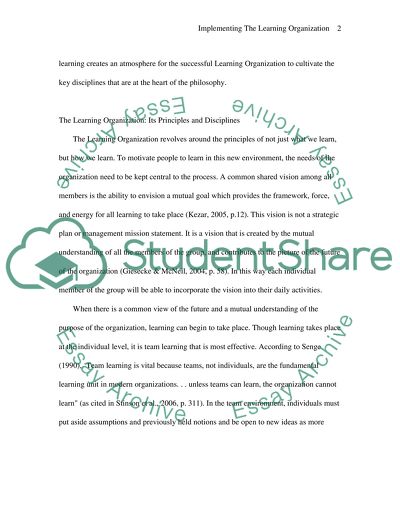Cite this document
(“Implementing The Learning Organization Essay Example | Topics and Well Written Essays - 2000 words”, n.d.)
Implementing The Learning Organization Essay Example | Topics and Well Written Essays - 2000 words. Retrieved from https://studentshare.org/miscellaneous/1522698-implementing-the-learning-organization
Implementing The Learning Organization Essay Example | Topics and Well Written Essays - 2000 words. Retrieved from https://studentshare.org/miscellaneous/1522698-implementing-the-learning-organization
(Implementing The Learning Organization Essay Example | Topics and Well Written Essays - 2000 Words)
Implementing The Learning Organization Essay Example | Topics and Well Written Essays - 2000 Words. https://studentshare.org/miscellaneous/1522698-implementing-the-learning-organization.
Implementing The Learning Organization Essay Example | Topics and Well Written Essays - 2000 Words. https://studentshare.org/miscellaneous/1522698-implementing-the-learning-organization.
“Implementing The Learning Organization Essay Example | Topics and Well Written Essays - 2000 Words”, n.d. https://studentshare.org/miscellaneous/1522698-implementing-the-learning-organization.


